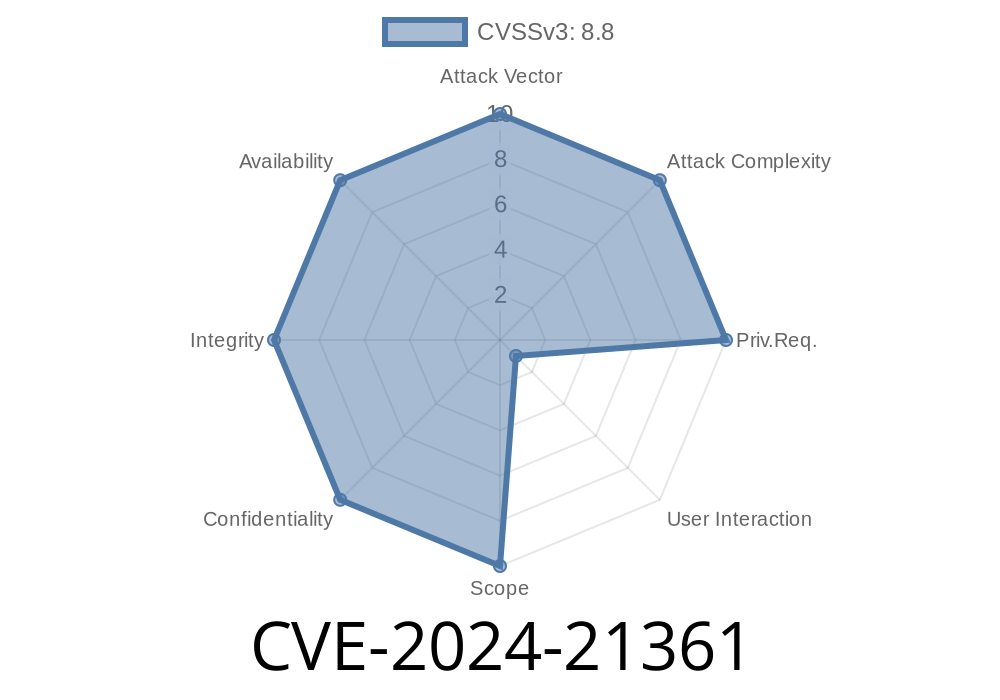A new vulnerability, identified as CVE-2024-21361, has been discovered in the Microsoft Windows Data Access Components (WDAC) Object Linking and Embedding Database (OLE DB) Provider for SQL Server. This vulnerability allows malicious actors to execute arbitrary code on a remote system by exploiting the affected software. In this post, we will delve into the details of this critical vulnerability, including its origin, code snippets, and potential exploits, as well as references to the original documents for further analysis.
Background
Microsoft WDAC facilitates universal data access to various data sources like SQL Server, Oracle, and other databases through OLE DB, which is a part of the MDAC technology. By utilizing OLE DB providers, developers can build applications that are compatible with various databases and data manipulation languages, thus improving overall interoperability. However, the newly discovered CVE-2024-21361 vulnerability exposes systems to possible exploitation by attackers, who can take advantage of a coding flaw in the OLE DB Provider for SQL Server to remotely execute arbitrary code.
Exploit Details
The vulnerability, CVE-2024-21361, resides in the way the WDAC OLE DB Provider for SQL Server processes user input. When parsing the input, the software fails to properly validate the length of a particular user-supplied string, leading to a buffer overflow vulnerability. An attacker can exploit this vulnerability by crafting a malicious SQL query that includes a specially designed, overly long string, thereby triggering the buffer overflow and executing arbitrary code on the target system.
Here's a code snippet illustrating the vulnerable function
void VulnerableFunction (char *input)
{
char buffer[128];
strcpy(buffer, input);
}
And here's an example of a malicious SQL query exploiting the vulnerability
SELECT * FROM vulnerable_table WHERE column_name='AAAAAAAAAAAAAAAA... (overly long value) ...AAAAAAAAAAAAA';
The original references for CVE-2024-21361 can be found in the following sources
1. CVE-2024-21361: National Vulnerability Database. The NVD provides further details of the vulnerability and documents associated with it, including CVSS v3.1 scores, configurations, and published/exploited dates.
2. Microsoft Security Advisory. Microsoft's official security advisory provides thorough information on affected products, impact, and solutions, such as updates and patches available for mitigating the risk posed by this vulnerability.
Mitigation
To safeguard against CVE-2024-21361, it is highly advised to keep your software up-to-date by applying the latest patches and updates provided by Microsoft. In addition to upgrading your software, consider implementing security best practices like enforcing the principle of least privilege and regular monitoring of system logs.
Conclusion
CVE-2024-21361 showcases the need for continuous software updates and diligence in the cybersecurity landscape. It's crucial for organizations to maintain a proactive approach to security, stay informed about emerging vulnerabilities, and apply necessary patches and updates. By doing so, the risk of exploitation by malicious actors can be significantly reduced, and the overall security of the affected systems can be effectively maintained.
Timeline
Published on: 02/13/2024 18:15:53 UTC
Last modified on: 02/13/2024 18:22:53 UTC
